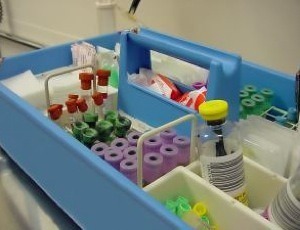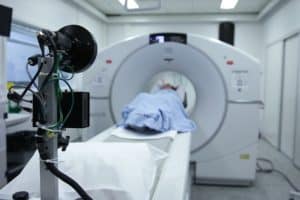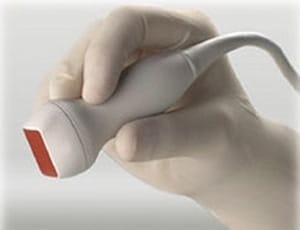Vascular access practices for therapeutic apheresis

Obtaining vascular access (VA) is a critical part of the therapeutic apheresis (TA) treatment plan. Currently, there are no guidelines for VA decision-making and maintenance related to TA procedures” Tanhehco et al 92019). Abstract: INTRODUCTION: Obtaining vascular access (VA) is a critical part of the therapeutic apheresis (TA) treatment plan. Currently, there are no guidelines […]
Umbilical catheters as vectors for generalized bacterial infection

The aim of this study was to evaluate bacterial colonization of the umbilical catheter, with a focus on the difference between various sections of the catheter, the duration of catheterization, patient status and gestational age” Sobczak et al (2019). Abstract: INTRODUCTION: Umbilical catheterization offers unique vascular access that is only possible in the neonatal setting […]
Polymer-based anti-quorum catheter coating challenges Staphylococcus aureus

The developed anti-quorum-coated catheter that is non-toxic and biocompatible has the potential to be used in other medical devices, thereby preventing catheter-associated infections” Vasudevan et al (2019). Abstract: Background: MDR Staphylococcus aureus is a major aetiological agent of catheter-associated infections. A quorum sensing targeted drug development approach proves to be an effective alternative strategy to […]
Barcode medication administration implementation in the operating room

Barcode medication administration (BCMA) is endorsed by the American Society of Health-System Pharmacists (ASHP) for use in hospitals to improve safety during medication administration” Dunn and Anderson (2019). Extract: Barcode medication administration (BCMA) is endorsed by the American Society of Health-System Pharmacists (ASHP) for use in hospitals to improve safety during medication administration.1–3 In inpatient […]
Trisodium citrate 4% versus heparin as a catheter lock for non-tunneled hemodialysis catheters

Non-tunneled hemodialysis catheters are currently used for critically ill patients with acute kidney injury requiring extracorporeal renal replacement therapy. Strategies to prevent catheter dysfunction and infection with catheter locks remain controversial” Quenot et al (2019). Abstract: BACKGROUND: Non-tunneled hemodialysis catheters are currently used for critically ill patients with acute kidney injury requiring extracorporeal renal replacement […]
Impact of hospital-based interventions targeting false-positive blood cultures

Blood culture contamination (BCC) increases length of stay (LOS) and leads to unnecessary antimicrobial therapy and/or hospital-acquired conditions (HACs)” Geislera et al (2019). Summary: Background: Blood culture contamination (BCC) increases length of stay (LOS) and leads to unnecessary antimicrobial therapy and/or hospital-acquired conditions (HACs). Aim: To quantify the magnitude of additional LOS, costs to hospitals […]
Should central venous catheters be rapidly removed to treat Staphylococcus aureus CRBSI

The aim of this study was to compare the incidence of failures in neonates and children with Staphylococcus aureus CR-BSI with or without rapid catheter removal” Boussameta et al (2019). Summary: Catheter-related bloodstream infection (CR-BSI) treatment is based on empiric antibiotherapy associated with or without catheter removal. The aim of this study was to compare […]
Peripheral PN containing amino acids associated with Bacillus cereus BSI

This study indicated that 8 h is the maximum appropriate drip infusion time for peripheral parental nutrition containing amino acids to prevent B cereus bloodstream infections” Shiota et al (2019). Extract: In some Japanese hospitals, patients using infusion bags for parenteral nutrition containing amino acids have developed Bacillus cereus bloodstream infections. We considered that proliferation […]
Clinical feasibility and effectiveness of bedside PICC placement

The aim of this study was to evaluate the clinical feasibility and effectiveness of bedside peripherally inserted central catheter (PICC) using portable digital radiography (DR) in intensive care unit (ICU) patients” Cho et al (2019). Abstract: The aim of this study was to evaluate the clinical feasibility and effectiveness of bedside peripherally inserted central catheter […]
Vancomycin monitoring based on area under the concentration–time curve

The purpose of this study was to (1) determine whether academic medical centers implemented area under the concentration–time curve (AUC)–based monitoring for vancomycin and (2) characterize perceived barriers to implementation and challenges experienced during the implementation process” Kufel et al (2019). Abstract: Purpose: The purpose of this study was to (1) determine whether academic medical […]
Innovation in central venous access device security

It is feasible to conduct an efficacy randomized control trial of the studied interventions. Further research is required to definitively identify clinical, cost-effective methods to prevent central venous access device failure by examining new dressing and securement technologies and techniques” Ullman et al (2019). Abstract: OBJECTIVES: Central venous access devices enable many treatments during critical […]
Multifaceted hand hygiene improvement program

Our multifaceted improvement program, for nurses and physicians of the ICUs in the largest hospital of Indonesia, resulted in a significant improvement of the HH knowledge and HH compliance, but HH compliance levels waned over time after the intervention, indicating a need for continued monitoring and repeated interventions” Saharman et al (2019). Abstract: Background: Hand […]
Prone positioning for peripherally inserted central catheter insertion

Peripherally inserted central catheters are usually inserted in supine patients. What should we do when facing a patient who cannot tolerate this position” Longo et al (2019). Abstract: Peripherally inserted central catheters are usually inserted in supine patients. What should we do when facing a patient who cannot tolerate this position? In this article, we […]
Subcutaneous suppressive antibiotic therapy for bone and joint infections

Since 2010, we have used infection salvage therapy using off-label subcutaneous (sc) injection of a β-lactam as PSAT for patients in whom oral PSAT is not possible” Pouderoux et al (2019). Abstract: BACKGROUND: Optimal treatment of prosthetic joint infection and chronic osteomyelitis consists of surgical removal of biofilm-embedded bacteria, followed by a 6-12 week course of […]
Does infusion time affect the retention of parenteral trace elements?

Overall, trace element retention appears to be minimally affected by infusion time” Ferrie (2019). Abstract: When readymade parenteral nutrition in multi-chamber bags is supplied without vitamins and minerals, these have to be added or given separately. Separate rapid infusion has logistical advantages but has been claimed to saturate tissue mechanisms, potentially increasing urine micronutrient losses. […]
Infusion-related events during natalizumab administration

This retrospective cohort study assessed the timing of infusion-related adverse events (IAEs) during natalizumab (NTZ) administration” Loonstra et al (2019). Abstract: This retrospective cohort study assessed the timing of infusion-related adverse events (IAEs) during natalizumab (NTZ) administration in well-documented relapsing-remitting multiple sclerosis (RRMS) patients who had received NTZ infusions in our centre between 2006 and […]
Management of venous perforation during central venous catheterization

When venous perforation occurs during CVC, it is safer and more reliable to adjust or withdraw the catheter under DSA guidance after a false lumen forms outside the catheter” Xu et al (2019). Abstract: RATIONALE: In recent years, central venous catheterization (CVC) has become widely used for hemodialysis patients. Based on 3 cases, we discussed […]
Ipsilateral vocal cord paralysis following central line placement

We present an unusual complication of recurrent laryngeal nerve palsy, leading to right vocal fold paralysis, following insertion of a right internal jugular tunnelled dialysis catheter” Koduri et al (2019). Abstract: BACKGROUND: Central venous catheters are extensively used in critical care units and in dialysis centres to gain access to the blood stream for the […]
Parameters influencing the pharmacodynamics of Piptaz

To assess population pharmacokinetics (PK) and pharmacodynamics (PD) of both piperacillin and tazobactam in neutropenia patients and examine dosage requirements” Benech et al (2019). Abstract: OBJECTIVES: To assess population pharmacokinetics (PK) and pharmacodynamics (PD) of both piperacillin and tazobactam in neutropenia patients and examine dosage requirements related to the MIC distribution for Gram-negative bacteria involved […]
Numeracy performance in first-year nursing students

To examine the factors that influence nursing students’ mathematics self-efficacy, the effect of numeracy instruction on self-efficacy, and the association between self-efficacy and numeracy test performance” Gregory et al (2019). Abstract: AIM AND OBJECTIVES: To examine the factors that influence nursing students’ mathematics self-efficacy, the effect of numeracy instruction on self-efficacy, and the association between […]
Management of central-line-associated bloodstream infections

Chelators such as citrate and EDTA have been widely studied alone or in combination with other antimicrobial agents in catheter lock solutions to prevent catheter-related bloodstream infections and to maintain catheter patency” Chaftari et al (2019). Abstract: The proper functioning of central lines is imperative for the management of patients with cancer or on hemodialysis. […]
Challenges of ultrasound in dialysis vascular access
Ultrasound may be used across the spectrum of dialysis access, including central venous catheter placements, vascular mapping, regional anesthesia, creation, maintenance and assessment of hemodialysis access” Niyyar (2019). Abstract: Sonography is increasingly being used by nephrologists and the field of dialysis access is no exception. Advances in technology have allowed the addition of this universally […]
Decision-making about IV administration set replacement

To explore nurses’ decision making regarding intravenous administration set replacement for vascular access device infusions in paediatric and adult clinical settings” Ray-Barruel et al (2019). Abstract: AIM AND OBJECTIVES: To explore nurses’ decision making regarding intravenous administration set replacement for vascular access device infusions in paediatric and adult clinical settings. BACKGROUND: Intravenous administration sets are […]
Attitudes towards needlestick injuries among junior doctors

To estimate the prevalence of under-reporting of NSIs and to evaluate the knowledge, attitude and behaviour towards NSIs among junior doctors in a tertiary hospital in Singapore” One et al (2019). Abstract: BACKGROUND: Needlestick injuries (NSIs) are common healthcare-related injuries and possible consequences include blood-borne infections. Despite that, a large proportion of NSIs are not […]
Biomarkers for the prediction of catheter-related venous thromboembolism

Pediatric venous thromboembolism (VTE) has increased over the past 10 years, with central venous catheters (CVC) being the strongest risk factor” Nossair et al (2019). Abstract: BACKGROUND: Pediatric venous thromboembolism (VTE) has increased over the past 10 years, with central venous catheters (CVC) being the strongest risk factor. Current tools are not sufficient to predict […]
Central venous catheter use increases ischemic stroke risk

CVC placement increases ischemic stroke risk, particularly in those aged ≤35 years; this trend warrants further investigation” Liao et al (2019). Abstract: BACKGROUND: Central venous catheter (CVC) placement is a common procedure used for the treatment of critically ill patients. However, ischemic stroke is a complication after CVC placement. AIM: This study investigated the association […]
Vascular access-related infections in two haemodialysis units

Access-related infections are a major cause of morbidity and mortality in haemodialysis patients. Our goal was to decrease the rate of these infections by implementing an intervention and surveillance program” Gork et al (2019). Abstract: BACKGROUND: Access-related infections are a major cause of morbidity and mortality in haemodialysis patients. Our goal was to decrease the […]
Venodilation effects of tapping versus massaging for venipuncture

No significant differences were observed between the degrees of venodilation that were achieved using the three investigated venodilation techniques” Yasuda et al (2019). Abstract: AIM: To compare the effectiveness of tapping and massaging venodilation techniques by evaluating venous cross-sectional area, venous depth, venous palpation score, and questionnaire responses of study participants. METHODS: This study had […]
Short versus long axis ultrasound guided approach for internal jugular vein cannulation

The long-axis view for IJV cannulation has similar insertion and procedure timings to the short-axis view. However, the complication rate and number of needle punctures required were less with the long-axis view than with those with the short-axis view” Rath et al (2019). Abstract: OBJECTIVES: Ultrasound-guided internal jugular vein cannulation is a standard procedure performed […]
Endovascular port-a-cath rescue in acute superior vena cava syndrome

Acute superior vena cava (SVC) syndrome is managed by endovascular recanalization, venoplasty with stenting, and anticoagulation. It is often associated with central venous catheters” Amberger et al (2019). Abstract: Acute superior vena cava (SVC) syndrome is managed by endovascular recanalization, venoplasty with stenting, and anticoagulation. It is often associated with central venous catheters. We present […]

